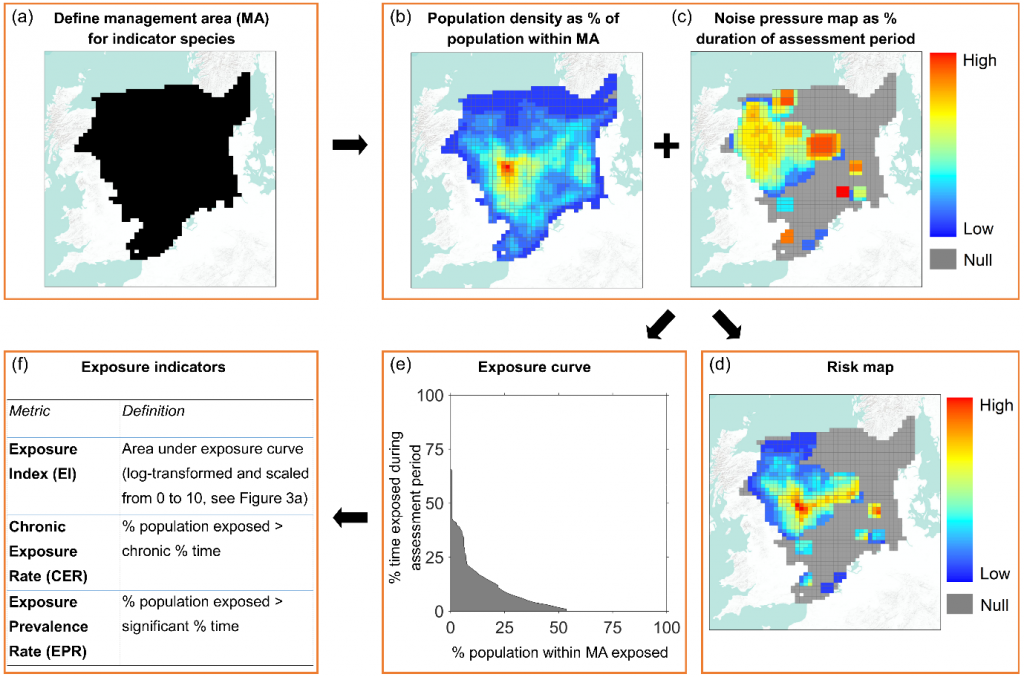Cefas scientists have published a study which proposes a new methodology to manage the impact of underwater noise on marine life.
The work, titled “Marine Noise Budgets in Practice” and published in the journal Conservation Letters, allows policy makers to measure how much noise pollution a particular marine species or protected area is exposed to, and to set targets to manage pollution levels.

What makes underwater noise, what does it mean for marine animals?
Underwater noise pollution can disturb or injure many marine animals, from the largest whales down to microscopic zooplankton. The study will assist ongoing efforts in the UK to better manage underwater noise. Noise can be produced by activities such as shipping, sonar, explosions, pile driving (e.g. to construct offshore wind farms) and geophysical surveys (e.g. to look for oil and gas beneath the seabed).
Marine noise budgets: the new approach
The new method considers the population density of marine animals and their exposure to noise pressure across a managed area of ocean to map the risk it poses. In doing so, policy-makers can better target efforts to manage this noise.

The article uses data from the 2017 OSPAR Intermediate Assessment, which carried out the first international assessment of impulsive noise activity (underwater noise made by pile driving, geophysical surveys, explosions, and some sonar activity), and was coordinated by the UK.
Dr Nathan Merchant, Principal Scientist at Cefas said, “There is growing scientific evidence that the noise pollution we release into the oceans is having a range of negative effects on marine organisms which use sound. Studies like this one provide environmental managers and policymakers with the tools they need to understand how the risk of impact from this emerging threat can be reduced.”
The open-access research has been published in Conservation Letters and is available here: http://onlinelibrary.wiley.com/doi/10.1111/conl.12420/abstract.
Image: Harbour porpoise, copyright Solvin Zankl
Funding for this work was provided by the UK Department for Environment, Food & Rural Affairs (Defra).